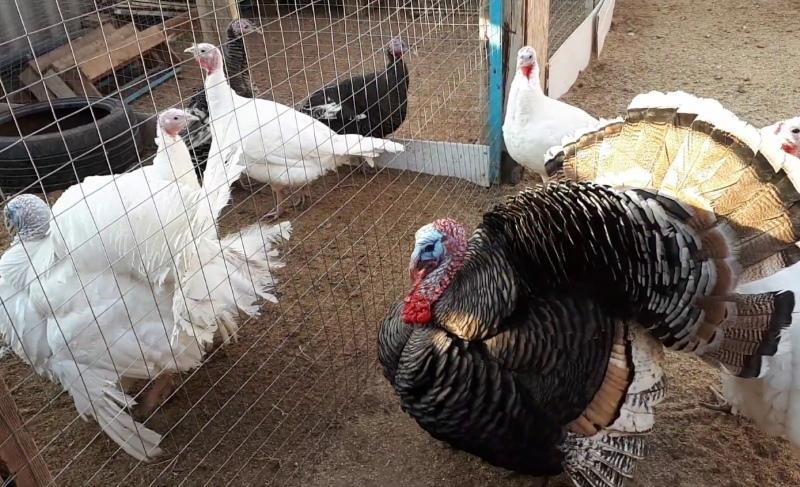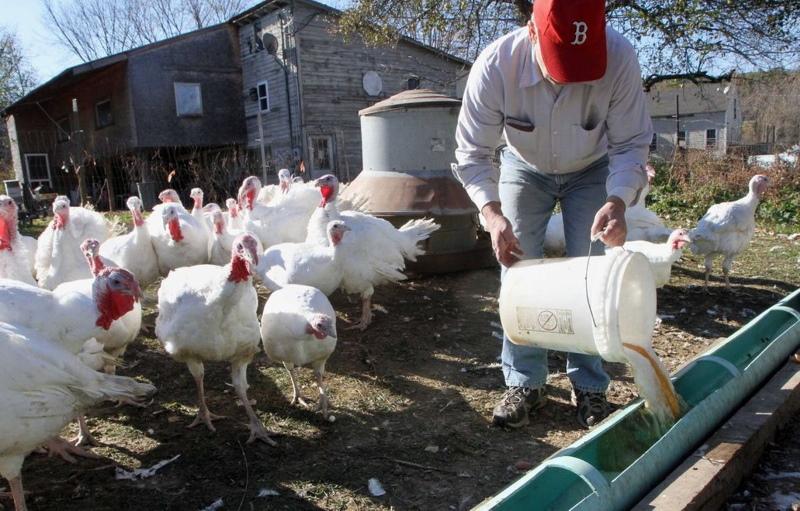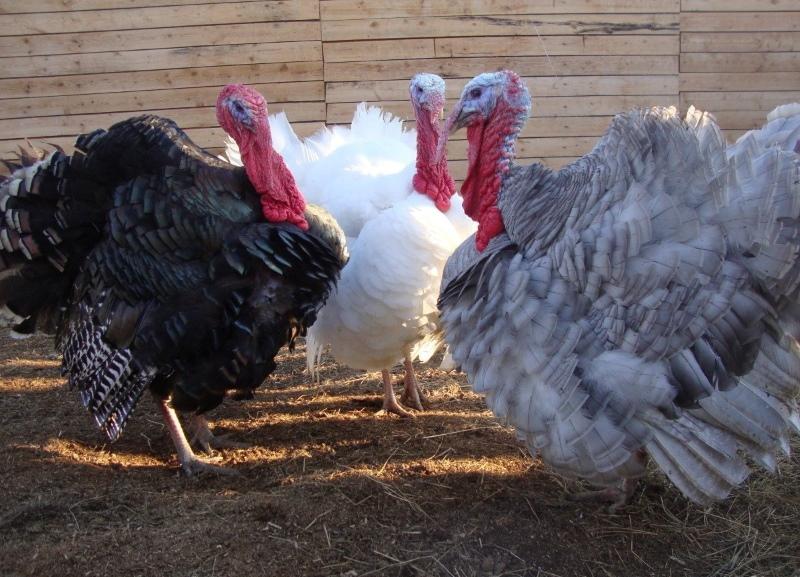Three important points to know - breeding turkeys at home for beginners
 Although turkeys require investment and attention, everything quickly pays off. These majestic birds gain weight well, they make excellent hens, and their meat is very tasty and dietary. Breeding turkeys at home for beginners is a great solution, even on a small scale. And when it turns out to increase the livestock and put the carcasses up for sale, then all the costs of growing and fattening can be "recouped" in a year.
Although turkeys require investment and attention, everything quickly pays off. These majestic birds gain weight well, they make excellent hens, and their meat is very tasty and dietary. Breeding turkeys at home for beginners is a great solution, even on a small scale. And when it turns out to increase the livestock and put the carcasses up for sale, then all the costs of growing and fattening can be "recouped" in a year.
Breeding turkeys at home for beginners - basic aspects

When planning turkey breeding, you should carefully study at least three important points:
- For what purpose the poultry will be raised - for meat or for obtaining eggs and further breeding. The choice of a particular breed depends on this.
- What conditions are needed for keeping poultry, which is quite demanding.
- How to feed turkeys so that they gain weight quickly.
In addition, it is important to take into account some disadvantages: turkeys get sick more often than the rest of the bird, and especially young animals. And they are easy to overfeed, because they eat often and a lot, which leads to obesity.
Which breed to choose
 The breed matters, especially if egg-laying individuals are needed, and meat turkeys cannot boast of this. Their maximum productivity is no more than 120 eggs per year, which will not be enough for breeding. But it will be possible to fatten them for meat in just six months, and broilers in just 3 months.
The breed matters, especially if egg-laying individuals are needed, and meat turkeys cannot boast of this. Their maximum productivity is no more than 120 eggs per year, which will not be enough for breeding. But it will be possible to fatten them for meat in just six months, and broilers in just 3 months.
Turkeys are the best hens and mothers that easily take other people's chicks into the family. If you need eggs, then it is worth starting such egg breeds as:
- white Moscow;
- bronze;
- virgin;
- Tikhoretskaya black.
For fattening for meat, breeds are chosen that quickly gain weight, for example:
- Hiddon;
- Highbread Converter;
- white broad-breasted.
Requirements for the conditions of keeping turkeys
 The poultry house must meet the main requirements - it must be spacious, dry, warm and light, and more specifically:
The poultry house must meet the main requirements - it must be spacious, dry, warm and light, and more specifically:
- for each adult you need at least 0.5 sq. m. area and a separate roost with a distance of 0.6 m from the neighboring;
- the litter should be changed at least twice a week so that it does not have time to get wet;
- drafts and dampness are unacceptable, this makes turkeys sick;
- for the prevention of parasites, containers with sand and ash are placed in the poultry house;
- in winter, the temperature in the room should not drop below 10 ° C warm, and in summer you need to make sure that it is not too hot there;
- for layers, they provide daylight hours up to 12 hours, for the rest, 7 hours of illumination with an ordinary lamp will be enough.
Turkeys, which are provided with walking, grow faster and get sick less. In addition, a daily walk will help avoid obesity and provide an opportunity to diversify the diet with pasture green food.
How and what to feed
 The hatched turkey poults are fed every 2 hours, and when they are a week old, they switch to 6 meals a day. Individuals from 2 months and layers are allowed to eat 4-5 times a day. For an adult bird, three meals are enough if the diet is balanced.
The hatched turkey poults are fed every 2 hours, and when they are a week old, they switch to 6 meals a day. Individuals from 2 months and layers are allowed to eat 4-5 times a day. For an adult bird, three meals are enough if the diet is balanced.
The main component of the diet is cereals - up to 65%. In addition, turkeys should be given:
- greens and vegetables;
- vitamins and premixes;
- bone and fish meal;
- chalk and limestone;
- some salt;
- wet mash;
- wheat bran and sunflower cake.
In summer, the bird should be allowed to “graze” where turkeys can find juicy grass. And in winter they will gladly enjoy dry brooms made of nettles, aspen, birch or poplar branches.